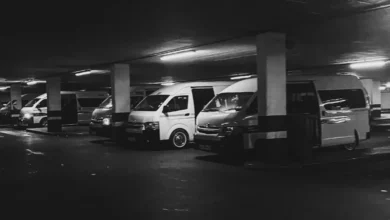E-Hailing vs. Traditional Taxis: Which Is Cheaper and Safer in Gauteng?

In Gauteng, the debate around e-hailing vs. traditional taxis continues to heat up as commuters search for the most affordable and secure way to get around. With platforms like Uber, Bolt, and inDrive now widely available, more South Africans are weighing their options beyond metered taxis and minibus taxis but are these app-based services truly more cost-effective and safer?
This article compares pricing, safety, convenience, and service quality to help you decide which option works best for your daily commute or occasional ride.
ALSO READ: How to Qualify for a Home Loan in South Africa: A Step-by-Step Guide
1. Pricing Comparison: E-Hailing vs. Traditional Taxis
E-Hailing Services
Platforms like Uber, Bolt, and Lyft use dynamic pricing models. This means the cost of a ride depends on:
- Distance and time of travel
- Traffic conditions
- Supply and demand (surge pricing during peak hours)
- Service level (UberX vs. UberBlack, for example)
Platforms like Uber, Bolt, and inDrive use dynamic pricing models, where fares depend on factors such as distance, time of day, traffic conditions, and rider demand. While these services offer features like fare estimates, digital payments, and occasional promotions, prices can vary widely often increasing significantly during peak hours, bad weather, or high-demand periods. This unpredictability means e-hailing is not always the most budget-friendly option, especially for longer trips.
Traditional Metered Taxis
Traditional taxi fares in Gauteng follow set rates, with no promotional offers or dynamic pricing. These fares are usually not negotiable and can sometimes be much higher if you’re unfamiliar with standard rates. Many metered taxis do not use GPS or app-based fare calculations, which can lead to confusion or disputes over pricing.
2. Safety: Which Option Offers Better Protection?
E-Hailing Safety Features
Most e-hailing apps include built-in safety features like:
- GPS tracking of trips in real-time
- Emergency buttons and rapid response options
- Driver identification and rating systems
- Cashless payments to avoid theft risks
- Trip sharing with friends or family
Platforms also perform background checks on drivers and allow users to report unsafe behaviour immediately.
Traditional Taxis
Safety in metered taxis largely depends on the driver and company. Many taxis lack GPS tracking, app-based monitoring, or panic buttons. Cash-only payments can also increase the risk of robbery, especially at night or in secluded areas.
Although some licensed taxi companies maintain strict safety standards, unregulated and unlicensed taxis can pose significant risks.
Verdict: E-hailing wins in terms of built-in safety features and accountability.
3. Availability and Convenience
E-Hailing
- Available 24/7 through mobile apps
- Can be booked instantly from any location
- Wait times usually range from 2 to 10 minutes in urban areas like Johannesburg and Pretoria
- Transparent trip details (driver info, vehicle, ETA)
Traditional Taxis
- Require phone bookings or physical hailing from taxi ranks
- Availability depends on region and time of day
- Often limited in suburban or rural areas
- No estimated arrival times
Verdict: E-hailing services offer better accessibility and user convenience.
4. Service Quality and User Experience
E-hailing platforms rely heavily on customer reviews. Drivers are rated after each ride, which motivates good service. The vehicles are also generally newer, cleaner, and more comfortable.
Traditional taxis don’t use ratings or service reviews. Customer experiences can vary greatly, and feedback rarely reaches the taxi operator.
Verdict: E-hailing leads in customer satisfaction.
5. Legal and Regulatory Environment
The South African government has implemented regulations for e-hailing operators, including:
- Vehicle permits
- Driver vetting
- Insurance policies for passengers
Traditional taxi drivers are also regulated under the National Land Transport Act, but enforcement is inconsistent. Disputes and violent clashes between the two groups have also raised concerns in Gauteng.
When comparing e-hailing vs. traditional taxis in Gauteng, e-hailing services come out ahead in most key areas:
| Factor | Winner |
|---|---|
| Pricing | Traditional Taxis |
| Safety | E-Hailing |
| Convenience | E-Hailing |
| Service Quality | E-Hailing |
| Regulation | Tie (Slight edge to e-hailing) |
That said, traditional taxis may still be useful in areas with limited app coverage or during load shedding and network outages when apps may be inaccessible. However, for the average commuter in Gauteng, e-hailing is generally safer, more affordable, and more convenient.



